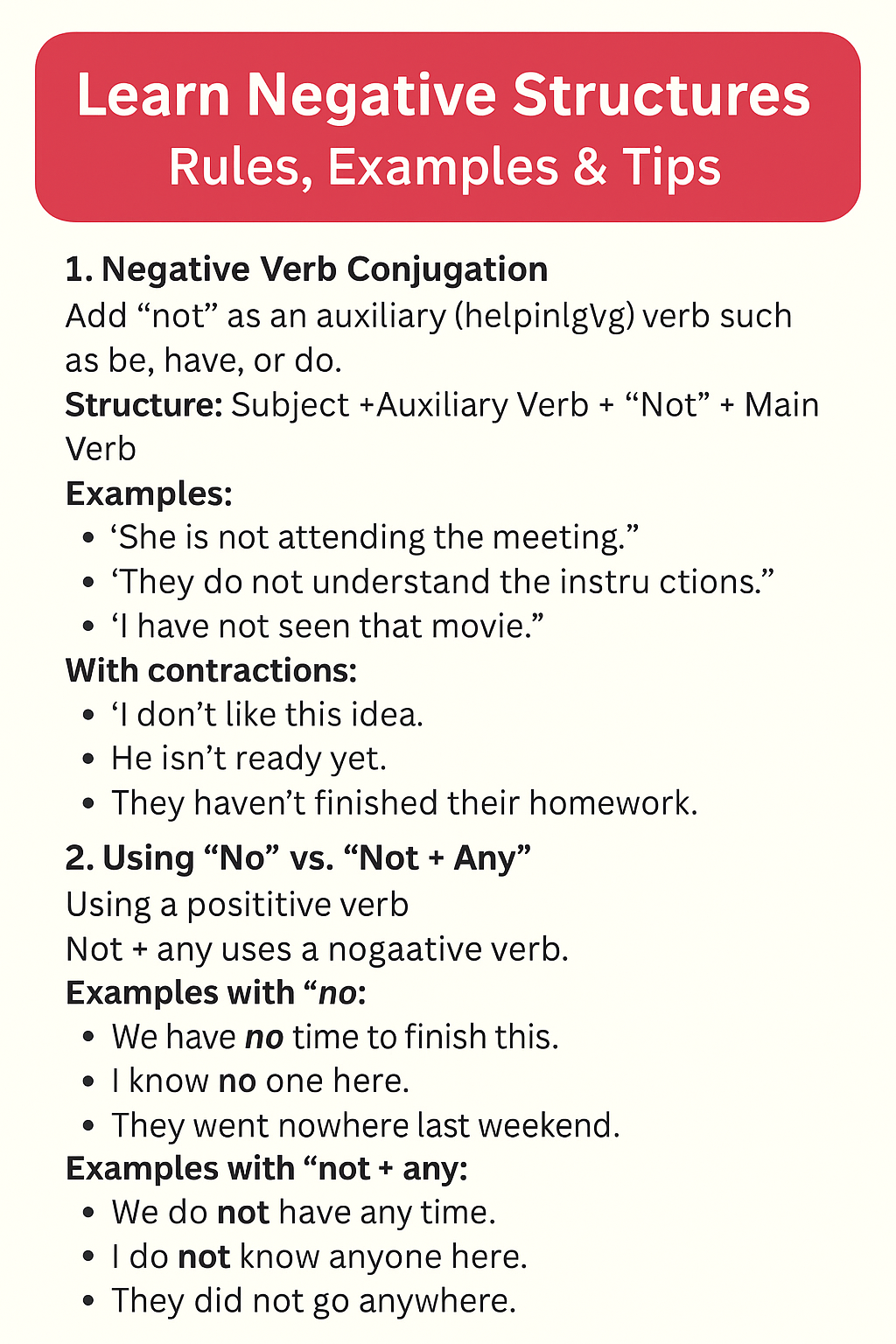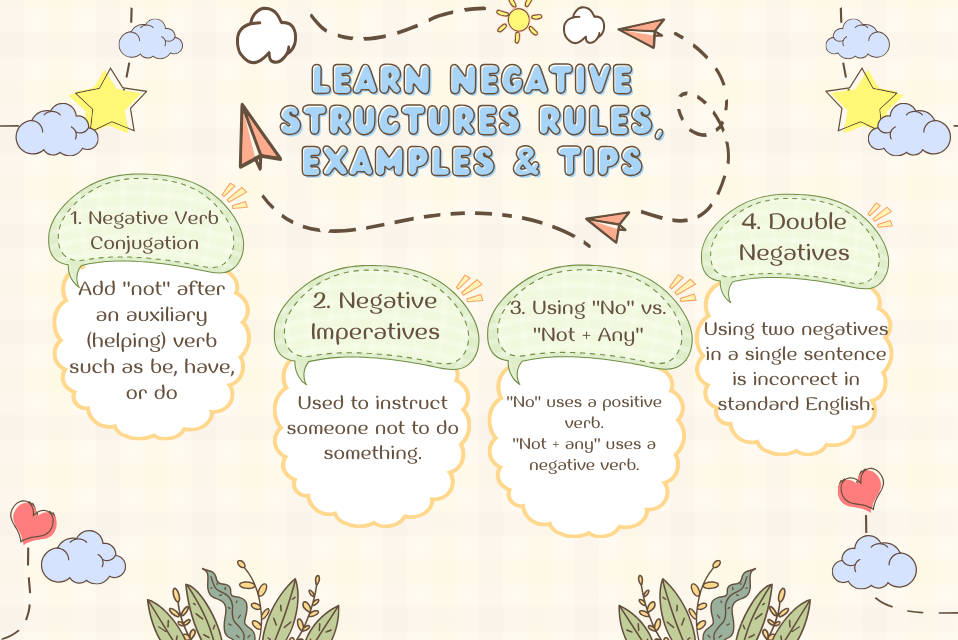Negative structures are essential in English for expressing what isn’t true, what isn’t happening, or what lacks a certain quality. Whether you’re negating a verb, noun, or an entire sentence, understanding how to form negatives correctly is vital for effective communication. To avoid common pitfalls in negative constructions such as doubling negatives or misplacing never check out our post on top grammar mistakes English learners make.
What Are Negative Structures?
A negative structure expresses the opposite of a positive statement. This is typically achieved by using words like:
- “not”
- “no”
- “none”
- “nothing”
- “nobody”
- “never”
- “neither”
Examples
- Positive: She loves coffee.
- Negative: She does not love coffee.
Common Types of Negative Structures

1. Negative Verb Conjugation
Add “not” after an auxiliary (helping) verb such as be, have, or do.
Structure
Subject + Auxiliary Verb + “Not” + Main Verb
Examples:
- She is not attending the meeting.
- They do not understand the instructions.
- I have not seen that movie.
With contractions
- I don’t like this idea.
- He isn’t ready yet.
- They haven’t finished their homework.
2. Negative Imperatives
Used to instruct someone not to do something.
Structure
Do + Not + Verb
Examples:
- Do not enter the room.
- Don’t forget to call me.
- Do not touch that!
3. Using “No” vs. “Not + Any”
- “No” uses a positive verb.
- “Not + any” uses a negative verb.
Examples with “no”:
- We have no time to finish this.
- I know no one here.
- They went nowhere last weekend.
Examples with “not + any”
- We do not have any time.
- I do not know anyone here.
- They did not go anywhere.
4. Double Negatives
Using two negatives in a single sentence is incorrect in standard English.
Incorrect
I don’t like nothing.
Correct
I don’t like anything.
Advanced Negative Structures
1. Negative Adverbs
Words like never, hardly, barely, and rarely express negation by modifying the verb.
Examples:
- I never eat meat.
- He hardly ever goes to the gym.
- She barely passed the exam.
Structure
Subject + Auxiliary Verb + Adverb + Main Verb
2. “Neither…Nor”
Connects two negative ideas.
Structure
Subject + Verb + Neither + Item 1 + Nor + Item 2
Examples:
- I have neither the time nor the energy.
- She likes neither tea nor coffee.
3. Negative Questions
Used to confirm, clarify, or express surprise.
Structure
Auxiliary Verb + Subject + “Not” + Main Verb + Object?
Examples:
- Haven’t you seen that movie?
- Didn’t you hear the news?
4. Indefinite Negative Pronouns
Words like nothing, nobody, nowhere, no one do not need “not.”
Examples:
- I have nothing to say.
- There is nobody here.
5. Negative Conditionals
Used to express hypothetical or unreal negative situations.
Examples:
- If you don’t study, you will fail.
- If I didn’t have work, I would join you.
- If they hadn’t missed the train, they would have arrived on time.
6. Negative Modal Verbs
Place “not” after the modal verb.
Examples:
- I can’t help you now.
- She shouldn’t go.
- They might not come.
Common Mistakes to Avoid
Double Negatives:
Avoid using two negative words in the same sentence.
Misplaced “Not”:
Ensure “not” follows auxiliary/modal verbs directly.
Tips for Mastery
- Practice word order.
- Use negative adverbs.
- Avoid overusing double negatives.
- Review conditional and modal structures regularly.
Conclusion:
Mastering negative structures will greatly improve your fluency and clarity in English. By understanding both basic and advanced forms, you can express denial, contradiction, and absence more effectively across various contexts.
FAQs on the Importance of negative structures
How do I form a negative sentence using auxiliary verbs?
You place not after an auxiliary verb such as do, is, have, etc.
Example: They do not agree. / She isn’t going.
What is the difference between “no” and “not + any”?
No is used with a positive verb: We have no time.
Not + any uses a negative verb: We do not have any time.
Both convey the same meaning but differ grammatically.
Can I use “not” with indefinite pronouns like “nothing” or “nobody”?
No, avoid using not with negative pronouns. That would create a double negative.
Correct: I have nothing to say.
Incorrect: I don’t have nothing to say.







